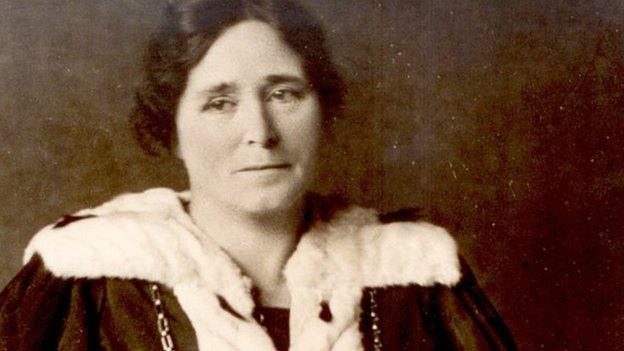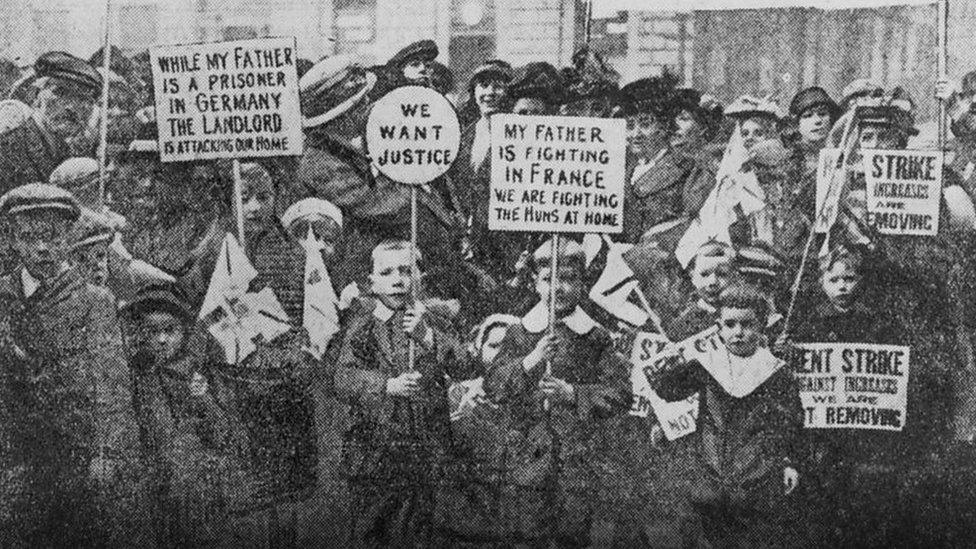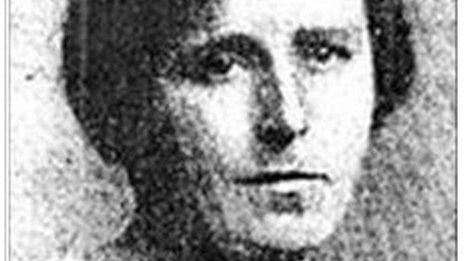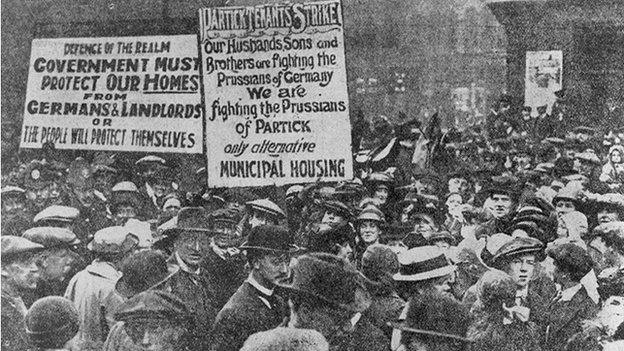Mary Barbour statue to be erected in Glasgow
- Published

Sculptor Andrew Brown with a small-scale model of the statue
A statue is to be erected in memory of Mary Barbour, who was a key player in fighting rent increases imposed by Glasgow landlords during World War One.
In 1915, the Govan-based campaigner led months of protest, which culminated in a large demonstration outside Glasgow Sheriff Court and the city chambers.
Within a month Munitions Minister Lloyd George changed the law to reduce rents to pre-war levels across the UK.
The statue is to be unveiled on 17 November outside Govan subway.
Designed by sculptor Andrew Brown, it shows Mary Barbour marching with members of the community behind her.

Mary Barbour was elected one of Glasgow's first female councillors in 1920
Former Labour MP Maria Fyfe, chairwoman of a committee set up to campaign for the statue, external, said it was ridiculous that Mrs Barbour's story did not appear in the history books.
She told BBC Radio's Good Morning Scotland programme the campaign had gained the support of local bodies, including housing associations and trade unions.
"They were all keen that the statue was in Govan because Mary Barbour lived here, she was a councillor of a ward here, and they just felt she belonged here," she said.
"Women haven't been given a proper place in history books, and it's not just social history, it's science and other areas too.
"There are only three statues of women in the whole of Glasgow.
"We thought it was high time to have another one and who better than Mary Barbour."
In Glasgow there are thought to be just three statues of women - Queen Victoria, philanthropist Isabella Elder and Republican Spanish Civil War hero Dolores Ibarruri.
The committee raised £110,000 through local donations to pay for the new statue.
Mrs Barbour was born in 1875 in Kilbarchan, Renfrewshire to a family employed in the carpet trade.
She became involved in various organisations after moving to Govan with her husband David, including the Co-operative Women's Guild and the Socialist Sunday Schools movement.

It was the Glasgow rent strike during the First World War that brought Mary Barbour to prominence
During the war, there was overcrowding in Glasgow's tenements.
Men had gone to the frontline and more workers had come into the city to work in the shipyards and munitions factories.
Landlords started to put rents up - in some cases up 23% on pre-war levels.
Mrs Barbour set up tenants committees and also co-ordinated eviction resistance - which included throwing flour and water over bailiffs.
By November 1915 as many as 20,000 tenants were on rent strike and the protest was spreading beyond Glasgow.
The issue was brought to a head when a factor tried to prosecute 18 tenants for non-payment of a rent increase.
Thousands of women marched alongside shipyard and engineering workers outside the court.
The court contacted Lloyd George who told them to release the tenants and promised he would take action.
In 1920 Mrs Barbour stood as the Labour candidate for Fairfield ward in Govan, and became one of the city's first female councillors.
Five years later she helped create the first family planning centre in Glasgow.
- Published6 March 2015

- Published9 March 2012

- Published25 February 2014
